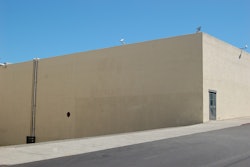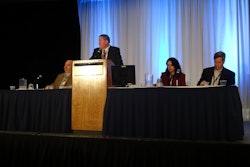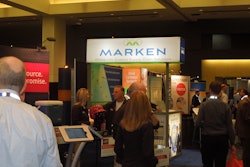Yet, it can be straightforward and trouble-free when clear expectations are established up front.
Increasingly, Global 2000 companies are requesting corporate support agreements that define mutual expectations and what those resources will cost. These include software licenses, training, spare parts availability, technical service and repair.
Depending on corporate policy, end users may benefit from well-defined quotations that classify whether the costs can be capitalized or expensed should the expenditure extend the life of the capital assets.
Establishing these agreements provides a comfort zone for customers who wish to gain the benefits of new technologies, new suppliers, or established suppliers in new regions of the world. This is especially important as the automation technology content of machinery increases.
Post-sales support approaches vary greatly. Some automation suppliers charge for services such as phone support, and for annual software licenses whether or not the customer seeks to upgrade to a new version. Other suppliers may waive subsequent annual licenses, make them optional, and/or charge nominal fees in order to retain or win the business.
Change parts and end-of-arm tooling are a fact of life, and despite the costs, the range of available capabilities of new machine designs may compare favorably to the previous generation of less flexible machinery. Tool-less change parts and servo automation of format changes can also reduce changeover time, labor and parts cost.
Support agreement topics for packagers to address with their suppliers include:
1. Global site support
Establishes capabilities, response times and costs for providing on-site after-sale support at end user sites. The suppliers may offer remote diagnostic services and tools that provide a fast, cost-effective resolution as an alternative to traveling to the site. Work closely with IT security to address any concerns with remote network access. Utilize the suppliers’ global presence. Communicate your expectation that local support can be called upon wherever the equipment will be installed.
2. Training
Training is a two-way street. It is a time commitment on the part of the customer. It is also an investment on the part of the supplier, even though training costs are subsidized by course fees. Lack of customer commitment to training is one of the most oft-cited reasons by suppliers for inefficiencies, both at startup and in ongoing operation.
Some machine builders provide PMMI Certified Trainers, which provides assurance of consistent training, documentation and testing methodologies. PMMI also maintains a Training Community of Practice, a valuable resource for training managers.
Typically, at least a portion of machinery training must take place on the equipment in the production environment. However, automation training can take place largely in the supplier’s classroom, away from the distractions of the trainee’s workplace.
Some automation suppliers and machinery builders are working to simplify interfaces and provide interactive help tools (see Chapter 7) to reduce training requirements for their customers.
3. Spare parts availability
On a case-by-case basis, the customer and suppliers should agree on a recommended spares package based on experience, specifics of the plant environment, estimated machine utilization, and location relative to supplier stocks.
Some agreements allow the customer to return unused spares in their original packaging after a specified time period, providing peace of mind until the system has proven its reliability.
4. Product repair
Uptime is the key for the user, while failure analysis is key for the supplier. But root cause analysis is just as important for users, since component failures are just as likely to be induced by operational issues as by product flaws.
Spares and repairs for critical wear parts should be coordinated so that a component can be quickly changed out and repair does not impact return of the machinery to service. Modular design and attributes of the control system can help minimize change-out times and should be considered during the purchase process.
In the specification (Chapter 2), consider requiring condition monitoring of factors such as torque, energy consumption, vibration, temperature, service intervals, and cycle-based criteria such as B10 bearing life. These capabilities are increasingly standard options in control systems. However, unless specified in the URS, they are not likely to appear in the lowest cost bid.
5. Software license fees
Automation software license fees have become a topic among users, as discounted licenses often offered by new suppliers don’t obviate the need to keep licenses for the installed base up to date. These are two separate issues.
License costs should reflect the very real cost of ongoing maintenance and development of software products. In general, they should be reasonable and reflect the value they add.
Standards-based software generally offer lower license costs than proprietary software. Software licenses are typically negotiated with the automation suppliers by both users and machine builders.
6. Technical support fees
Like software licenses, machine builders and users may negotiate the scope and costs of technical support and maintenance services based on prevailing trends. Technical support should also reflect the value added.
A distinction should be made between expected product support and budgeting for engineering or systems integration services that may be outsourced to assist in specific projects.
7. Additional engineering services
Ranging from proprietary modification of new machinery to line integration to retrofits, there are many good reasons to include rates and project management processes for engineering services into a support agreement.
8. Long term protection from product obsolescence
Continued availability and scheduled cost increases are both critical aspects of control product obsolescence.
For machine components, parts are generally available unless the OEM goes out of business, and even then, third parties often make a business out of replicating parts for machines 40+ years old.
For controls, however, technological advances can cause relatively early obsolescence. The machine builder or user should investigate the control supplier’s record for supporting products after ten years in production, which should be at least an additional ten years, without significant increases in price.
Sometimes, control suppliers use large price increases to dissuade customers from continuing to purchase older products. This practice pits the retrofit cost against replacement parts costs. Online auction sites have become an opportunistic channel for sourcing legacy components, both new and used. Caveat emptor.
9. Support for international standards
Various chapters in this guide cite international standards, specifically Chapters 2, 5 and 6. By tying support for these standards into the support agreement, the maximum number of potential suppliers can compete for your business without overburdening your organization.
In the OMAC Packaging Workgroup, adhering to these standards is referred to as a ‘win-win-win’ situation, meaning it’s good for the entire community of packagers, machinery builders and automation technology providers.
The standards referred to in this specifying guide are not intended to impact any supplier’s legitimate competitive advantages. They are meant instead to reduce the difficulty of overcoming incompatibilities between functions that are generally available from all suppliers in the marketplace – such as machine communications.
10. Documentation
Define your requirements for operating, maintenance and spare parts manuals. Also, include electrical specifications (e.g. schematics) and program backups.
11. Prioritization
Define criteria for prioritizing an issue. For example, a Level 1 issue is something that causes a stop in production. The contract would call for the OEM to respond to a Level 1 issue in a certain time frame. A Level 3 issue may be an inoperable failure, but a workaround is available. The associated time frame would be longer. Support levels are negotiable, but should be defined up front.
12. Intellectual property rights
The issue revolves around who owns the intellectual property if the end user develops an innovation for their process and has the OEM implement it. This most often becomes an issue when modifications are made after the equipment is installed. There is no right or wrong answer, but should be negotiated and declared up front.
As with any working agreement, not every contingency can be anticipated. But it benefits both parties to set clear mutual expectations in the form of a contract, particularly when new technology, a new supplier or a new customers are concerned. Support agreements also protect both parties long after the individuals originally involved with the project are no longer involved.
Liked this article? Download the entire playbook here.


























